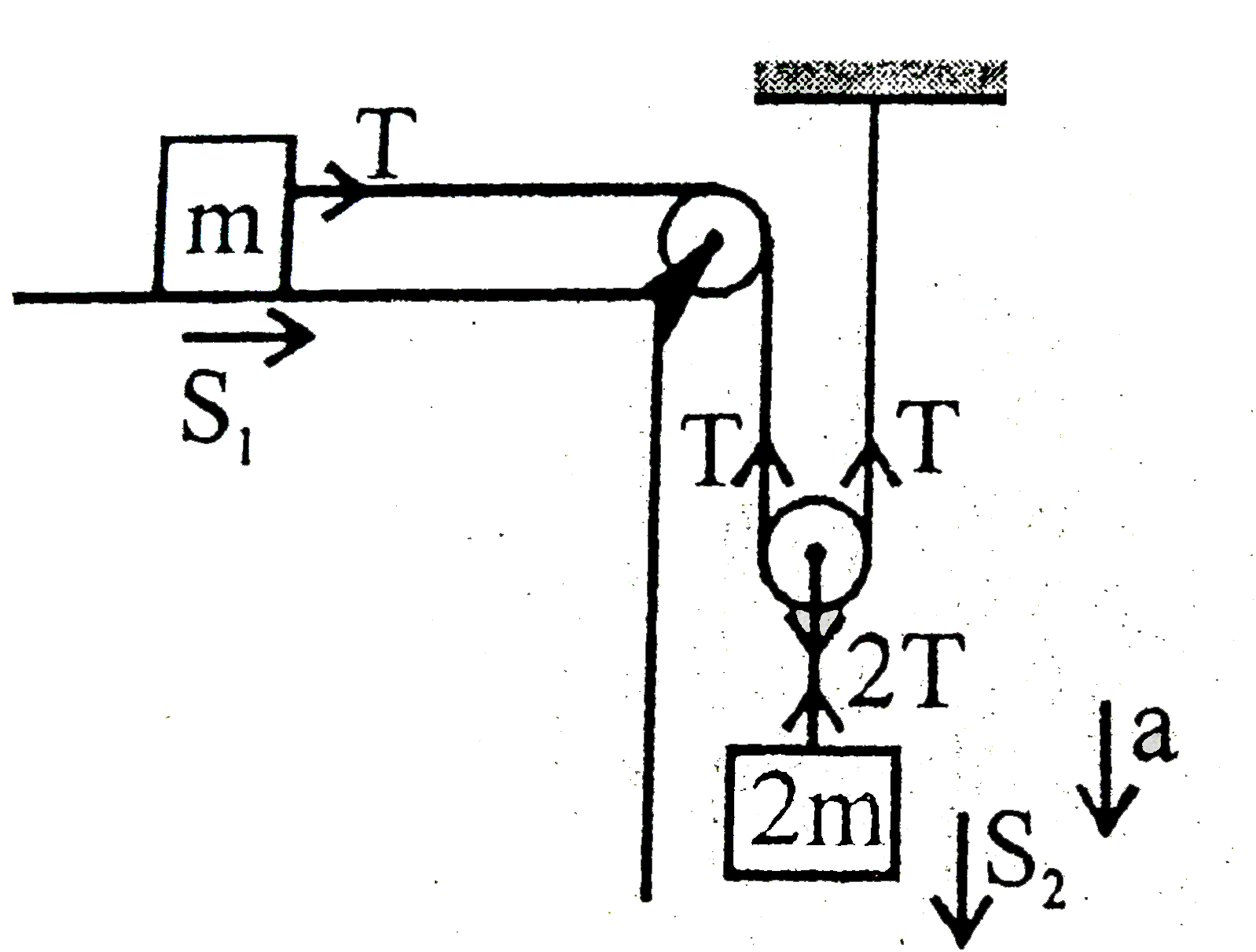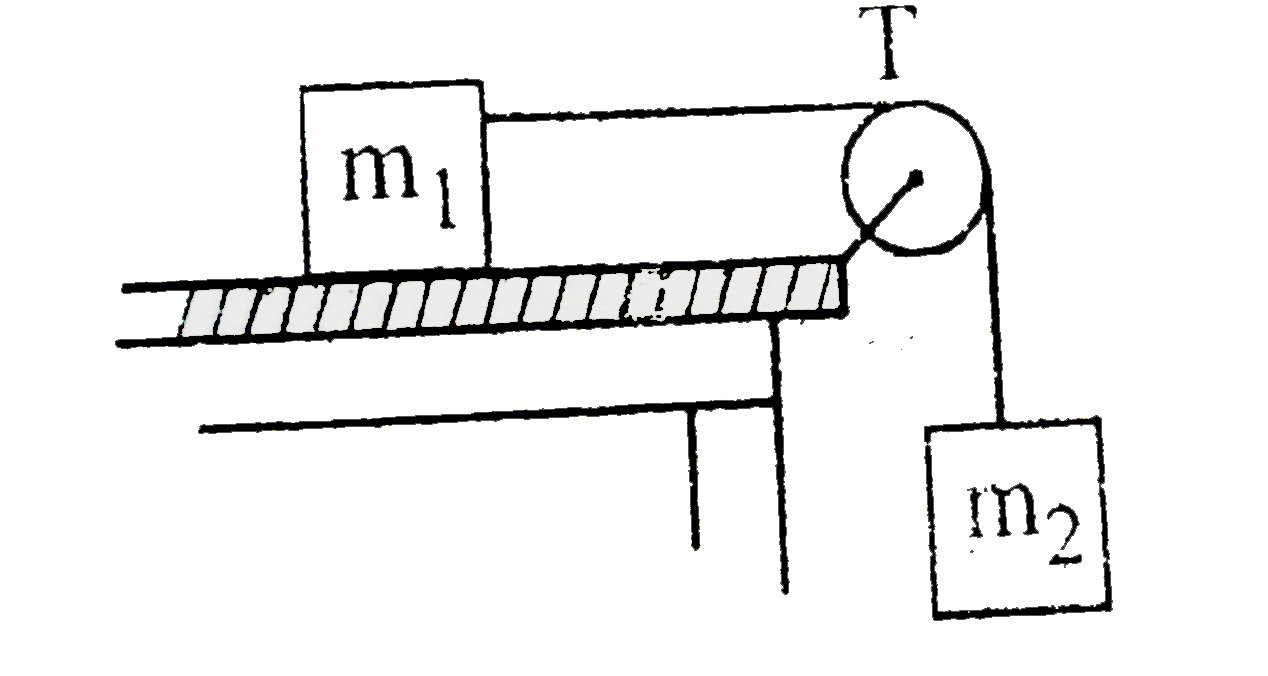Complete Solutions to PHYSICS PART- A of chapter TEST PAPERS of Class 12 book with complete answers and questions
| Class 12 | PHYSICS |
| Chapter | TEST PAPERS |
| BANSAL | PHYSICS PART- A |
| Number Of Questions | 13 |
| Academic Year | 2023-24 |
Two block of mass 5 kg and 10 kg respectively are connected by a massless string as shown in the figure. The whole system is kept on a frictionless surface. A force of 50 N is applied horizontally as shown in the figure. The tension T in the string will be
 02:16View Solution
02:16View SolutionFind the acceleration of the block of mass m. Assume pulleys are massless and frictionless.
 04:30View Solution
04:30View SolutionWhich driving in a strange land you see a speed limit sign on a highway that read 96,00 fourlong per fornight. How many miles per hour is this? One furlong is 1/8 mile, and a fort-night is 14 days. (A furlong originally referred to the length of a plowed furrow).
01:24View SolutionA surveyor is surveying a cave. He follows a passage that goes 210 m straight west, then `90sqrt(2)m` in a direction `45^(@)`east of north, then 100 m at `37^(@)` east of south. After a fourth unmeasured displacement he finds himself back where he started. determine the fourth displacement (magnitude and direction).
04:11View SolutionTwo masses `m_(1)` and `m_(2)` are connected by an inextensible cord and arranged as shown in the diagram with `m_(1)` sliding along on a frictionless surface and `m_(2)` from a light frictionless pulley. What would be the mass of the falling mass `m_(2)` if both the sliding mass `m_(1)` and the tension T in the cord were known?
 02:49View Solution
02:49View SolutionThe upwards normal force exerted by the force of an elevator on a passenger who weighs 600 N is 570 N. The acceleration of passanger is
01:18View SolutionThe work done by a force on a body moving from (1,4) m to (3,8) m is 44 J. The force can be :
02:53View SolutionSwimming is an interesting sport, and one that relaxes us also. Normally and average human being would drown in water.As a person goes inside water , the water exert a force on it in upwared direction. This force is called buyont froce. The force is given by V dg, where d is density of water, V is volume of body inside water and g is acceleration due to gravity. normally, this force is lesser than this weight. so the man pushes water to get an additional force on himself. this effort is known as swimming. assume water has a density of `1000 kg//m^(3)`
A man of mass 50 kg has a volume of `0.045 m^(3)`. how much force should be apply on water to just stay afloat?02:15View SolutionSwimming is an interesting sport, and one that relaxes us also. Normally and average human being would drown in water.As a person goes inside water , the water exert a force on it in upwared direction. This force is called buyont froce. The force is given by V dg, where d is density of water, V is volume of body inside water and g is acceleration due to gravity. normally, this force is lesser than this weight. so the man pushes water to get an additional force on himself. this effort is known as swimming. assume water has a density of `1000 kg//m^(3)`
By how many `m^(3)` should man increase his volume (by inflating his lungs) so that he can stay afloat without applying any force on water01:54View SolutionSwimming is an interesting sport, and one that relaxes us also. Normally and average human being would drown in water.As a person goes inside water , the water exert a force on it in upwared direction. This force is called buyont froce. The force is given by V dg, where d is density of water, V is volume of body inside water and g is acceleration due to gravity. normally, this force is lesser than this weight. so the man pushes water to get an additional force on himself. this effort is known as swimming. assume water has a density of `1000 kg//m^(3)`
If a sphere is resting on the ocean floor, its free body diagram would be01:27View SolutionMagnitude of resultant of two vector `vec(A)` and `vec(B)` is equal to 2. angle between two vectors is `180^(@)` if `|vec(A)|=3` then find `|vec(B)|`
01:52View SolutionA weighing machine inside a stationary lift reads 50 kg when a man stands on it. In which following cases can the reading be more than 50 kg ?
02:55View SolutionSelect the true statements (s)
01:42View Solution
PHYSICS PART- A questions and complete solutions for chapter TEST PAPERS of BANSAL PHYSICS (HINGLISH) of Class 12
